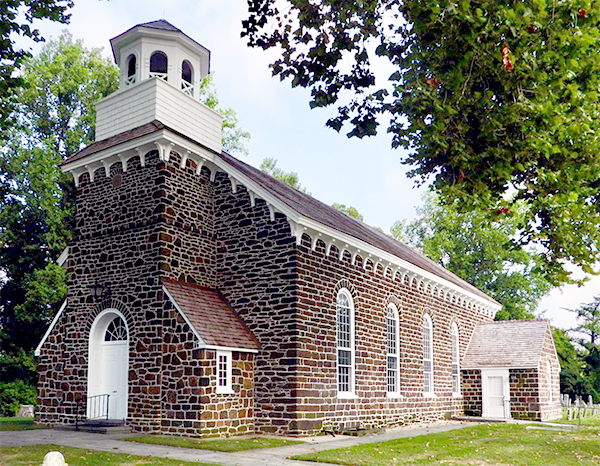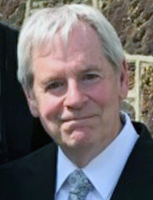There are only a handful of churches that can claim they worship in a sanctuary built five years before the American Revolution.
 When the Jersey Sandstone building of Deerfield Presbyterian Church in Bridgeton, N.J., was constructed in 1771, the “Founding Fathers” were young men. George Washington was 39 years old. John Adams was 36. Thomas Jefferson was 28. James Madison was 20. Alexander Hamilton was 16.
When the Jersey Sandstone building of Deerfield Presbyterian Church in Bridgeton, N.J., was constructed in 1771, the “Founding Fathers” were young men. George Washington was 39 years old. John Adams was 36. Thomas Jefferson was 28. James Madison was 20. Alexander Hamilton was 16.
As it has for the past 250 years, the building stands as a testament of its members’ faithfulness to Jesus Christ. Though Deerfield’s sanctuary was built in 1771, the church has been part of the surrounding community since its founding in 1737 by Scottish immigrants. The church—which celebrates its 284th anniversary this year—is about 50 miles south of Philadelphia, Pa.
 On August 8, about 90 current and past members gathered to celebrate God’s work through the church over nearly three centuries. The occasion also marked the completion of repairs and upgrades to the building that included a laborious restoration of the sandstone exterior, a new cedar-shingle roof, lightning protection, and other projects.
On August 8, about 90 current and past members gathered to celebrate God’s work through the church over nearly three centuries. The occasion also marked the completion of repairs and upgrades to the building that included a laborious restoration of the sandstone exterior, a new cedar-shingle roof, lightning protection, and other projects.
Ken Larter, Deerfield’s pastor since 2002 and the church’s longest-serving minister, said the congregation originally met in a log cabin near the site of the existing sanctuary. Led by the church’s second pastor, Enoch Green, the congregation completed the sandstone sanctuary shortly before the Revolutionary War. Larter added that in addition to being a pastor, Green “was instrumental in getting the congregation behind the revolutionary cause. In a sermon that he preached from our sanctuary, he was basically recruiting men for the revolutionary army.”

Ken Larter
Larter said Green served as a chaplain with the men who were recruited.
“Unfortunately, he caught camp fever when he was with George Washington’s troops and came back ill to this area, dying fairly young.” Camp fever—or Toxoplasmosis—is an infection that usually occurs by eating undercooked, contaminated meat.
Another notable Deerfield pastor was John Brainerd, brother of celebrated missionary David Brainerd.
“David Brainerd, if you remember your Colonial church history, was a missionary to the Native American Indians,” Larter said. “Unfortunately, he contracted tuberculosis and died quite young in the home of Jonathan Edwards. John Brainerd, his brother, was able to carry on David’s work and was minister at Deerfield for three years before he died in 1781.”
John Brainerd, Enoch Green, and a third minister from the era, Simeon Hyde, are buried side-by-side just outside Deerfield’s sanctuary.
Larter explained that in the 1700s, a deceased minister would sometimes be laid to rest under the sanctuary. This was done for Green and Brainerd, but their remains were later reinterred on either side of Hyde just outside the church building.
“In the very oldest part of the graveyard, in the space occupied by the old log cabin church, burials go back to the early 1700s. Then, directly across the street from the sanctuary, there are graves primarily from the 19th and 20th centuries. And a tenth of a mile away, in what is called the triangle, are 20th and 21st-century burials. So the church is surrounded by those who have belonged to us in times past,” he said.
As for the present and future, Larter noted that Deerfield remains committed to the authority of Scripture and the truth of the gospel.
“I think what is important is the very fact the congregation has survived for going on 300 years. That survival is ultimately tied to its commitment to the authority of Scripture and the historic Christian gospel,” Larter said. “Churches in so many places have compromised again and again on the essentials of the faith, but the theological heritage of the church remains solidly Bible-based and evangelical. I believe that is why the Lord has allowed us to stay here for so long.”
by Tim Yarbrough
EPConnection correspondent

What an historic celebration of a centuries-long, faithful witness to God. Congrats to Deerfield!